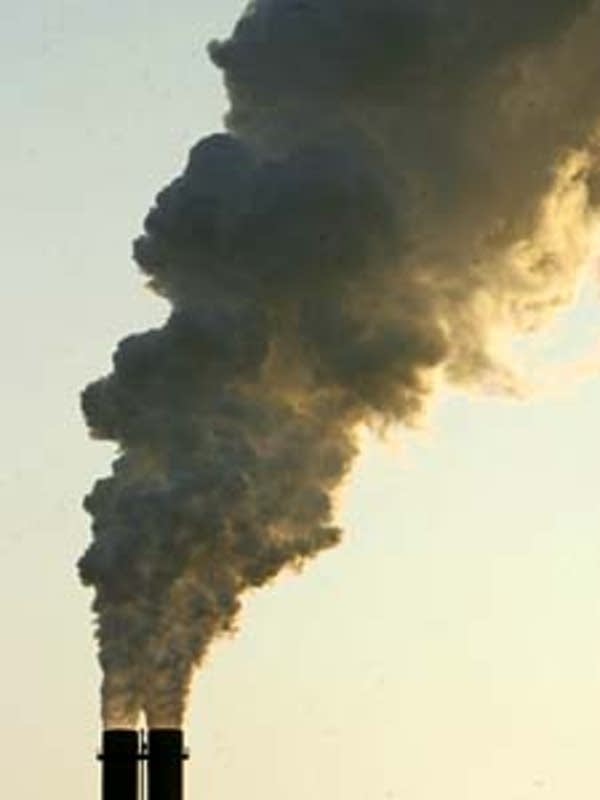Xcel agreement dims coal's future, critics say
Go Deeper.
Create an account or log in to save stories.
Like this?
Thanks for liking this story! We have added it to a list of your favorite stories.

Xcel Energy is one of five big electric companies targeted last fall by New York Attorney General Andrew Cuomo. Using a New York state law, he subpoenaed them to determine whether their reports to the Securities and Exchange Commission -- the agency that regulates Wall Street -- were adequate.
The government will soon set limits on greenhouse gas emissions, and companies should start taking those limits into account, Cuomo and other investor watchdogs say. Coal-fired power plants produce about half of the nation's electricity and more than 40 percent of the carbon dioxide emissions.
So far, Xcel is the only company to reach an agreement with Cuomo.
Michael Connelly is Vice President and General Counsel for Xcel Energy.
Turn Up Your Support
MPR News helps you turn down the noise and build shared understanding. Turn up your support for this public resource and keep trusted journalism accessible to all.
"We're proud of what we've done on our environmental leadership, the things we've done around renewables, and the things we're doing to reduce our carbon dioxide emissions," he says. "So in one respect we've got a very positive story to tell and we don't have a problem it wherever we can do so."
And Xcel has been reporting its carbon emissions voluntarily through the Carbon Disclosure Project, a non-profit organization that tracks greenhouse gas emissions of three-thousand companies worldwide. Xcel is the fifth-largest emitter of greenhouse gases in the U.S., according to the company.
Xcel is building a new coal-fired power plant in Pueblo, Colorado, one that was planned years ago, But Connelly says. With the government moving toward limits on greenhouse gases, the company wouldn't plan such a plant today, he says.
"I think since that's happened you've seen a sea change in terms of the industry, and frankly a lot of the regulators' approach to coal plants," Connelly says, "while everyone's trying to determine whether capture and sequestration will be feasible and economical."
Xcel doesn't plan to build to build any more coal plants until the carbon dioxide can be captured and stored.
Across the country, the number of coal plants on the drawing boards has declined from about 150 two years ago to just over 80 today.
One of them is the Big Stone II plant, proposed for Milbank, South Dakota, just over the border from Minnesota.
Bill Grant is an energy expert with the Izaak Walton League; he served on the Minnesota Climate Change Advisory Group. He predicts the move by Xcel will discourage utilities from building new coal plants, including Big Stone II.
"I think it lends to credence to the arguments that we've been making that these are risky investments," Grant says. "And that shareholders deserve to be notified of the fact that because these are riskier investments, regulators in the future may not want to pass those higher costs on to consumers, meaning shareholders would be on the hook for them."
"You've seen a sea change in terms of the industry, and frankly a lot of the regulators' approach to coal plants."
But the utilities proposing the Big Stone plant disagree. The Big Stone plant would be 20-percent more efficient than the average existing coal-fired power plant, so it would put out less carbon dioxide, according to Cris Kling, a spokeswoman for Otter Tail Power, the lead company in the project.
"It remains to be seen what the reaction is to any risk level with the investment," Kling says. "I would think that a project like Big Stone II that is more efficient, would actually have more value in carbon-constrained environment."
Big Stone II has been approved by the South Dakota Public Utilities Commission. Hearings are taking place on air quality permits there.
On Thursday the North Dakota Public Service Commission gave its stamp of approval. That will make it easier for the companies that sell power in North Dakota to increase their rates to pay for it.
In Minnesota, the Public Utilities Commission put off a decision on power lines from the proposed plant; a ruling is expected in December.
Construction cost for Big Stone II is now estimated at almost $1.3 billion.





